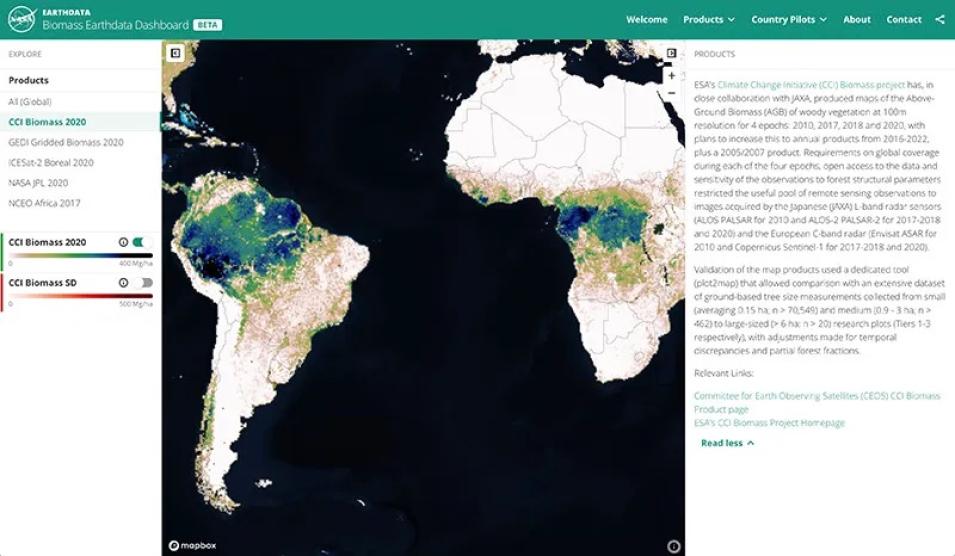One of the benefits of working with IMPACT is the opportunity to work on exciting projects that can benefit the planet. One such project is MAAP, the Multi-Mission Algorithm and Analysis Platform. MAAP is designed to provide the aboveground terrestrial carbon research community with airborne and space-based data that provides improved geographic coverage at better spatial resolutions by bringing together data from NASA’s Global Ecosystem Dynamics Investigation (GEDI) lidar mission, the NASA-ISRO Synthetic Aperture Radar (NISAR) mission and the European Space Agency’s (ESA) BIOMASS mission.
MAAPing Aboveground Terrestrial Carbon
MAAP addresses the needs of the research community by making these data openly available in a unified, collaborative environment. In order to support this collaborative environment, the MAAP has established a framework between ESA and NASA on which researchers can share data, science algorithms, and compute resources. MAAP accomplishes this by providing a cloud-based, collaborative environment that enables users to more easily access, share and process data and code from both ESA and NASA. Through the MAAP data system, NASA is prototyping new and innovative data system solutions that enable open science in cloud-based platforms and that ensure the ongoing availability and quality of data, metadata, and services.
MAAP is an international development initiative between NASA and ESA. IMPACT is part of NASA’s MAAP development team. The scope of the MAAP platform demands a multidisciplinary team which is reflected in the IMPACT team members working on the project. An accomplished data scientist, Dai-Hai Ton That brings his expertise in data analysis and data and metadata management technologies to the project. Hai contributes to the development of the MAAP analytical platform by maintaining a reliable environment in Amazon Web Services for discovering, storing, accessing and analyzing remote sensing data which makes data and metadata available to remote sensing communities. He also supports and improves the data and metadata services included in MAAP. Asked about the key benefits MAAP offers to users, Hai replied that:
"MAAP provides a reliable environment for discovering, storing, accessing and analyzing remote sensing data."
Another IMPACT member brings his experience working with lidar data, performing data analysis, ensuring the quality of software, and using satellite data to investigate biological variables. Samuel Ayers is a Earth science and informatics expert who creates and verifies metadata for various biomass relevant datasets that are ingested into the MAAP’s common metadata repository. Sam also creates user documentation for the unified MAAP user guide. Asked about the importance of the MAAP project, Sam replied:
"For biomass researchers, the MAAP provides an easier way to discover and use biomass data for comparison, analysis, evaluation, and the generation of new datasets. MAAP helps the broader science community by providing open source software enabling the creation of repeatable and shareable science tools. It provides an example for organizing and storing data and generating metadata in a way that is discoverable on the cloud and facilitates interagency collaboration."
Any analytics platform depends upon a solid and robust infrastructure on which it can run. This is where IMPACT member Shawn Foley comes in. Shawn is an expert in managing all things infrastructure. He primarily focuses on the Amazon Web Services cloud that supports the MAAP platform. He tracks spending, provisions resources, and troubleshoots infrastructure issues as they arise, and is the primary interface with the service provider, Goddard Space Flight Center’s Mission Cloud Platform. Shawn describes his contributions to the MAAP project:
"I cross multiple functional areas including technical, project management and deployment, vendor relations, and other things that come up from time to time, a.k.a. 'do-er of things'."
What Shawn has found most interesting about the project is interacting with team members from Jet Propulsion Laboratory, as well as observing the interactions with ESA. He found the sizing of the environments for the deployments was interesting in terms of the scale of the operation, as well as the inter-dependencies with external resources and services.
These are but a few of the large interdisciplinary and international team that is building and supporting the MAAP analytical platform. We plan on highlighting more of those on the MAAP team in a future post.
More information about IMPACT can be found at NASA Earthdata and the IMPACT project website.


